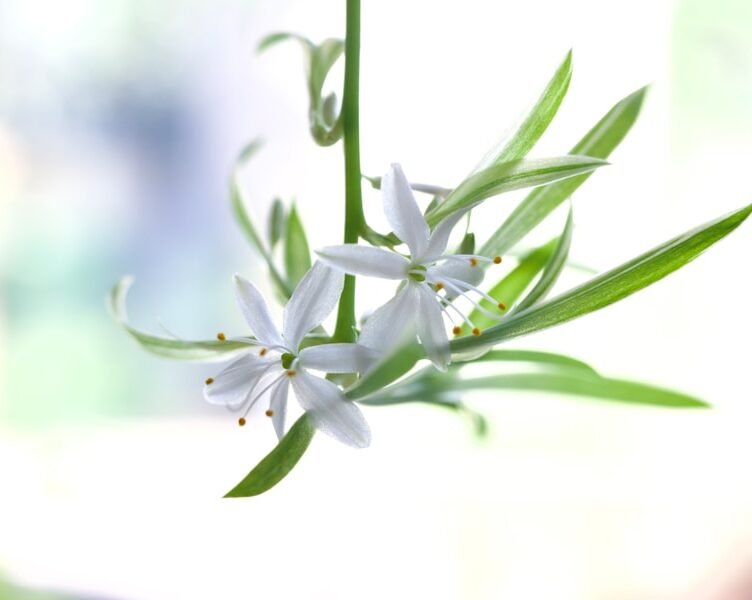Regular monitoring of low-light indoor plants for pests is vital to ensure their optimal health and vitality. The limited exposure to natural light and airflow makes these plants more prone to pest infestations, increasing their vulnerability. If left unchecked, pests like spider mites, aphids, and mealybugs can rapidly infest plants, leading to stunted growth, yellowing leaves, and even plant mortality.
Early detection of infestations through regular inspections enables prompt eradication of pests, preventing irreparable damage to plants. Regular pest inspections also contribute to maintaining a healthy indoor environment. Pests like spider mites and aphids can spread to other plants, causing widespread infestations that are challenging to control.
By regularly inspecting low-light indoor plants for pests, the spread of infestations can be prevented, and the overall health of the indoor garden can be protected. Ultimately, regular pest inspections are crucial for preserving the beauty and health of low-light indoor plants.
Key Takeaways
- Regular pest inspections are important for the health of low-light indoor plants
- Signs of pest infestation include yellowing leaves, sticky residue, and visible pests
- Frequency of pest inspections varies for different types of low-light indoor plants
- Effective pest inspections involve checking both the plant and its surrounding environment
- Common pests to look out for in low-light indoor plants include spider mites, aphids, and mealybugs
Signs of Pest Infestation in Low-Light Indoor Plants
Common Signs of Pest Infestation
Some common signs of pest infestation in low-light indoor plants include yellowing or discolored leaves, stunted growth, and the presence of webbing or sticky residue on the leaves. Additionally, you may notice small insects or eggs on the undersides of the leaves or along the stems of your plants.
The Importance of Thorough Pest Inspection
If you notice any of these signs, it is important to conduct a thorough pest inspection to determine the extent of the infestation and take appropriate action to eradicate the pests.
Secondary Effects of Pest Infestations
Another sign of pest infestation in low-light indoor plants is the presence of sooty mold, a black, powdery substance that can develop on the leaves of plants infested with aphids or scale insects. Sooty mold is a secondary effect of pest infestations and can further weaken your plants if left untreated.
Proactive Measures to Protect Your Plants
By recognizing the signs of pest infestation in your low-light indoor plants, you can take proactive measures to protect your plants and prevent further damage.
Frequency of Pest Inspections for Different Types of Low-Light Indoor Plants
The frequency of pest inspections for low-light indoor plants can vary depending on the type of plant and its individual needs. Generally, it is recommended to conduct pest inspections at least once a week for all low-light indoor plants. However, some plants may require more frequent inspections, especially if they are particularly susceptible to pests or if they are showing signs of stress or infestation.
Plants such as peace lilies, snake plants, and ZZ plants are known for their resilience and ability to thrive in low-light conditions, but they are still susceptible to pest infestations. These plants should be inspected at least once a week for signs of pests such as spider mites and mealybugs. On the other hand, more delicate plants such as ferns and orchids may require more frequent inspections, as they are more prone to pest infestations and may show signs of stress more quickly.
Tips for Effective Pest Inspections in Low-Light Indoor Plants
| Pest Inspection Frequency | Recommendation |
|---|---|
| Spider mites | Weekly |
| Mealybugs | Bi-weekly |
| Fungus gnats | Monthly |
| Aphids | Bi-monthly |
Conducting effective pest inspections in low-light indoor plants requires attention to detail and thoroughness. When inspecting your plants for pests, it is important to carefully examine the undersides of the leaves, along the stems, and in the soil for any signs of infestation. Use a magnifying glass if necessary to get a closer look at any potential pests or eggs.
In addition to visual inspections, it is also helpful to gently shake the leaves of your plants over a white piece of paper to check for the presence of small insects or eggs. This can help you identify pests that may be hiding on your plants and take appropriate action to eradicate them. Finally, it is important to keep a close eye on any new growth or emerging leaves, as these areas are particularly vulnerable to pest infestations.
Common Pests to Look Out for in Low-Light Indoor Plants
There are several common pests that low-light indoor plant owners should be on the lookout for during their regular pest inspections. Spider mites are one of the most common pests that affect low-light indoor plants, as they thrive in warm, dry conditions and can quickly take over a plant if left unchecked. These tiny pests can be difficult to spot with the naked eye, but they leave behind telltale webbing on the undersides of leaves and can cause significant damage to your plants.
Aphids are another common pest that can infest low-light indoor plants, feeding on the sap of the plant and causing stunted growth and yellowing leaves. These small insects can quickly multiply and spread to other plants in your home if not addressed promptly. Mealybugs are also a common pest that affects low-light indoor plants, leaving behind a white, cottony residue on the leaves and stems of your plants.
These pests can weaken your plants and make them more susceptible to other diseases if left untreated.
Integrated Pest Management Strategies for Low-Light Indoor Plants
Regular Pest Inspections: The First Line of Defense
Integrated pest management (IPM) strategies are an effective way to control pests in low-light indoor plants while minimizing the use of chemical pesticides. One key component of IPM is regular pest inspections, which allow you to catch infestations early and take appropriate action to eradicate pests before they cause significant damage to your plants.
Natural and Organic Control Methods
In addition to regular inspections, IPM strategies for low-light indoor plants may include using natural predators such as ladybugs or lacewings to control pest populations, as well as using horticultural oils or insecticidal soaps to suffocate and kill pests.
Maintaining a Healthy Growing Environment
Another important aspect of IPM for low-light indoor plants is maintaining a healthy growing environment for your plants. This includes providing adequate airflow and ventilation, as well as avoiding overwatering or allowing water to accumulate in saucers or trays under your plants. By creating a healthy growing environment for your low-light indoor plants, you can help them resist pest infestations and maintain their overall health and vitality.
Benefits of Regular Pest Inspections for the Health of Low-Light Indoor Plants
Regular pest inspections offer numerous benefits for the health and vitality of low-light indoor plants. By catching pest infestations early, you can prevent significant damage to your plants and take appropriate action to eradicate pests before they cause irreparable harm. This can help your plants maintain their beauty and vigor, as well as prevent the spread of infestations to other plants in your home.
In addition to preventing damage to your plants, regular pest inspections can also help you maintain a healthy indoor environment by preventing the spread of pests from one plant to another. By conducting regular inspections and taking proactive measures to control pests, you can protect the overall health of your indoor garden and enjoy beautiful, thriving low-light indoor plants for years to come. In conclusion, regular pest inspections are essential for maintaining the health and vitality of low-light indoor plants.
By recognizing the signs of pest infestation, conducting thorough inspections, and implementing integrated pest management strategies, you can protect your plants from damage and maintain a healthy indoor environment. With regular care and attention, your low-light indoor plants can thrive and bring beauty and joy to your home for years to come.
FAQs
What are low-light indoor plants?
Low-light indoor plants are plants that can thrive in environments with minimal natural light, making them suitable for indoor spaces with limited sunlight.
Why is it important to inspect low-light indoor plants for pests?
Inspecting low-light indoor plants for pests is important because pests can damage the plants, hinder their growth, and spread to other plants in the vicinity. Regular inspections can help identify and address pest issues early on.
How often should low-light indoor plants be inspected for pests?
Low-light indoor plants should be inspected for pests at least once a week. However, if there are signs of pest infestation or if the plants are particularly susceptible to pests, more frequent inspections may be necessary.
What are some common pests that affect low-light indoor plants?
Common pests that affect low-light indoor plants include spider mites, aphids, mealybugs, scale insects, and fungus gnats. These pests can cause damage to the plants by feeding on their leaves, stems, and roots.
How can I inspect my low-light indoor plants for pests?
To inspect low-light indoor plants for pests, carefully examine the leaves, stems, and soil for any signs of pest infestation. Look for visible pests, such as tiny insects or webs, as well as any damage to the plant’s foliage. Additionally, check for any changes in the plant’s overall health and growth.





